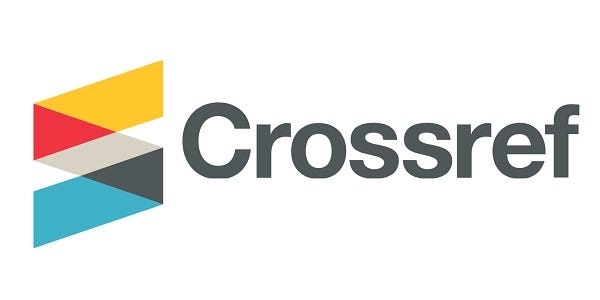SENTIMENT ANALYSIS OF SERVICE PROVIDER ON TWITTER TWEET USING NAIVE BAYES CLASSIFIER WITH PHP
Utilizing Naive Bayes Classifier in PHP for Sentiment Analysis of Service Provider Tweets on Twitter
DOI:
https://doi.org/10.47080/iftech.v5i2.2752Keywords:
Twitter, Sentiment Analysis, Naive Bayes, PHPAbstract
This study aimed to analyze the sentiments of Twitter users towards internet services provided by Indosat, Ooredoo and XL Axiata in Indonesia. Twitter Tweet data is taken using the Twitter API and processed using the PHP programming language. The classification process uses the Naïve Bayes Classifier algorithm to group positive, negative, and neutral categories. The calculation results show that negative sentiment towards Indosat Ooredoo services scores 56%, while sentiment towards XL Axiata services negatively scores 50%. The accuracy of the sentiment analysis system using PHP reaches 78% based on comparison with manual classification results. This research provides benefits in the form of information about user sentiment towards cellular internet service providers, so that each provider can improve and optimize internet services based on this data.
Keywords: twitter, sentiment analysis, naïve bayes, php
References
Catelli, R., Pelosi, S., & Esposito, M. (2022). Lexicon-Based vs. Bert-Based Sentiment Analysis: A Comparative Study in Italian. Electronics, 11(3), 374. https://doi.org/10.3390/electronics11030374
Chen, Z., Cao, Y., Yao, H., Lu, X., Peng, X., Mei, H., & Liu, X. (2021). Emoji-Powered Sentiment and Emotion Detection from Software Developers’ Communication Data. ACM Trans. Softw. Eng. Methodol., 30(2).
Do, H. H., Prasad, P. W., Maag, A., & Alsadoon, A. (2019). Deep learning for aspect-based sentiment analysis: a comparative review. Expert systems with applications, 118, 272-299.
Drus, Z., & Khalid, H. (2019). Sentiment analysis in social media and its application: Systematic literature review. Procedia Computer Science, 161, 707-714.
F. K. Sufi and M. Alsulami, Automated Multidimensional Analysis of Global Events With Entity Detection, Sentiment Analysis and Anomaly Detection, IEEE Access, vol. 9, pp. 152449-152460, 2021, doi: 10.1109/ACCESS.2021.3127571.
Ghonge, A. H., & Kamble, V. (2019). A Review on Improving the Clustering Performance in Text Mining. International journal of scientific research in science, engineering and technology, 6, 380-385.
H. T. Phan, V. C. Tran, N. T. Nguyen and D. Hwang, Improving the Performance of Sentiment Analysis of Tweets Containing Fuzzy Sentiment Using the Feature Ensemble Model, IEEE Access, vol. 8, pp. 14630-14641, 2020, doi: 10.1109/ACCESS.2019.2963702.
Kadhim, A. I. (2019). Survey on supervised machine learning techniques for automatic text classification. Artificial Intelligence Review, 52(1), 273-292.
M. Bibi, W. Aziz, M. Almaraashi, I. H. Khan, M. S. A. Nadeem and N. Habib, A Cooperative Binary-Clustering Framework Based on Majority Voting for Twitter Sentiment Analysis, IEEE Access, vol. 8, pp. 68580-68592, 2020, doi: 10.1109/ACCESS.2020.2983859.
Minaee, S., Kalchbrenner, N., Cambria, E., Nikzad, N., Chenaghlu, M., & Gao, J. (2021). Deep learning--based text classification: a comprehensive review. ACM computing surveys (CSUR), 54(3), 1-40.
P. Gupta, S. Kumar, R. R. Suman and V. Kumar, "Sentiment Analysis of Lockdown in India During COVID-19: A Case Study on Twitter," in IEEE Transactions on Computational Social Systems, vol. 8, no. 4, pp. 992-1002, Aug. 2021, doi: 10.1109/TCSS.2020.3042446.
P. Wang et al., Classification of Proactive Personality: Text Mining Based on Weibo Text and Short-Answer Questions Text, IEEE Access, vol. 8, pp. 97370-97382, 2020, doi: 10.1109/ACCESS.2020.2995905.
Reyna, N. S., Pruett, C., Morrison, M., Fowler, J., Pandey, S., & Hensley, L. (2022). Twitter: more than tweets for undergraduate student researchers. Journal of Microbiology & Biology Education, 23(1), e00326-21.
Wang, Y., Guo, J., Yuan, C., & Li, B. (2022). Sentiment Analysis of Twitter Data. Applied Sciences, 12(22), 11775. https://doi.org/10.3390/app122211775
Yadav, A., & Vishwakarma, D. K. (2020). Sentiment analysis using deep learning architectures: a review. Artificial Intelligence Review, 53(6), 4335-4385.


1.jpg)







